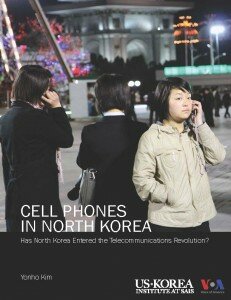The North Korean regime has maintained an iron grip on its society over the past decades by essentially isolating its people from the outside world. However, maintaining a total restriction on information access has become an increasingly tough challenge for the regime since the late 1990s, when a massive number of people starved to death due to a widespread famine. Before the famine, the state dominated food distribution, keeping people subservient and immobile for fear of losing their only access to sustenance. However, since the collapse of the public [food] distribution system (PDS), the government can no longer monopolize the information available to its population, as North Koreans seek ways to survive on their own.
With increasing marketization supported by cross-border traders and smugglers, substantial numbers of North Koreans are able to access outside media brought into the country from China. Exposure has not been limited to foreign TV and radio but has also included USB drives, MP3 players, and DVDs containing foreign, mostly South Korean, dramas and movies. In addition, smuggled Chinese cell phones have allowed people in the border areas, where mobile reception from China is available, to talk to relatives and friends in China or South Korea. Many defectors in South Korea communicate with their families back in the North by delivering these illegal mobile phones through brokers. These cell phones have also made it possible for some South Korean organizations to collect information directly from inside North Korea. In an attempt to crack down on the illegal flow of information into and out of North Korea, the North Korean authorities have tried to confiscate cell phones smuggled in from China.
Concurrent with its crackdown on Chinese cell phones, the North Korean regime has shown strong support for its own domestic cell phone service provided by Koryolink, the North’s only official cellular network, since late 2008. While North Korea banned cell phone use and confiscated registered cell phones without compensation within two years of Thai firm Loxley Pacific’s launch of 2G GSM mobile service in late 2002, the 3G W-CDMA mobile service by Koryolink has been able to operate uninterrupted by the government thus far. Moreover, business is now booming for Koryolink, and cell phones have become a daily necessity to its more than two million subscribers, contrary to initial speculation that mobile service would be provided only to a few privileged individuals. As of the end of the third quarter of 2011, the service is available in Pyongyang and 100 cities, covering 14% of North Korea’s territory and 94% of its 24 million people.
This is a remarkable development in a country where the average monthly wage for factory workers is around 3,000 North Korean won, or less than 50 cents at black market exchange rates. Since the majority of North Koreans cannot afford the prepaid call charges, let alone buy the handsets, the reported subscriber rate has led to controversy. Is there a difference between the number of actual users and subscribers?
In this USKI-VOA report, “Cell Phones in North Korea,” Yonho Kim takes a closer look at the trends and implications of the cell phone boom in North Korea. His research examines such questions as: Who owns North Korean cell phones? How are cell phones obtained? How are subscriber plans set up? How are North Koreans using their cell phones? How have cell phones changed social norms?
Kim also delves deeper into the business side of the equation, examining Koryolink’s business structure in greater detail and what this really means for the Egyptian partner, Orascom, in terms of profitability and sustainability in North Korea.




